You arrive at Windhoek’s Hosea Kutako Airport where will be met by your guide and driven the short distance to your overnight accommodation at Hotel Thule where you can relax on your first night. The hotel sits high on a hill overlooking Windhoek and has a lovely restaurant with an outside terrace. A perfect first night stop over before your adventure begins the following day.
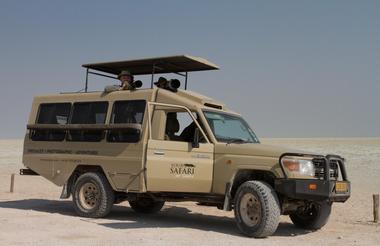
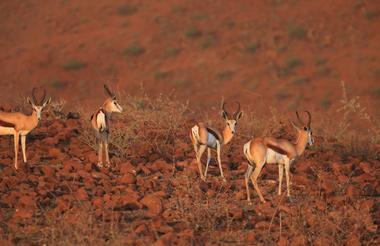
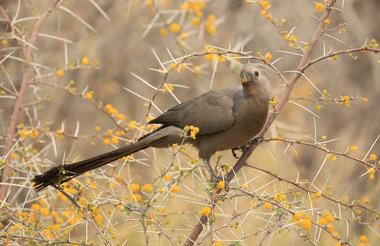
Trans Kalahari Inn - The relatively close proximity to Windhoek airport makes the Trans Kalahari Inn a great first and last overnight stop.
The terrace is a perfect place to meet your fellow travellers and enjoy your first sundowner together and the on-site restaurant serves lovely food all day.
Bed & Breakfast
An early start for you this morning heading south on the main tar road before turning off onto the gravel roads and over the mountain passes towards the Namib Desert.
Dead Valley Lodge is situated just inside the entrance to Sossusvlei and is one of only 2 lodges inside the national park. Here you will spend two nights enjoying the wide vistas from your lodge as well as visiting the world's highest sand dunes at Sossusvlei and Dead Vlei.
The ever changing features of this unique desert landscape captivates people and throughout the day the shifting sands change colour under the Namibian sun.
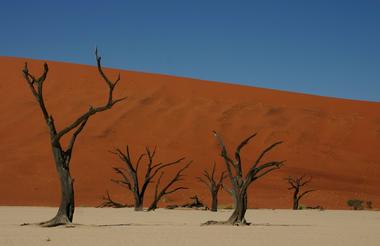
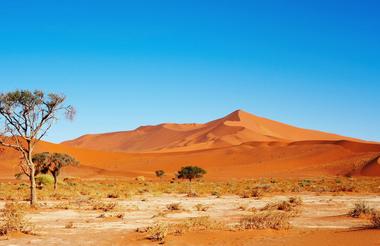
Highlights: dramatic desert scenery, high mountain passes, the world’s highest sand dunes. Oryx, ostrich, springbok, black backed jackals, dune lark, sociable weavers
Here you will be enjoying the wide vistas from your lodge along with the opportunity of going south to the Namib Rand Nature Reserve as well as visiting the world's highest sand dunes at Sossusvlei and Dead Vlei.
The ever changing features of this unique desert landscape captivates people and throughout the day the shifting sands change colour under the Namibian sun.

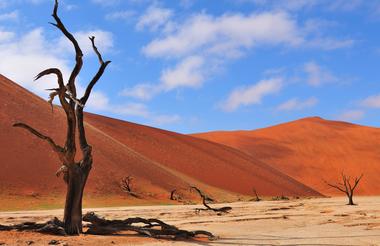
The often overlooked area south of Sossusvlei is beautiful in its own right with the Namib Rand Nature Reserve a particular highlight. The Tsarisberg Mountains are beautiful at sunset and the eco lodge has a a high viewing platform designed for sundowners, perfect sunsets and crystal night skies.
A long drive today but an interesting one, over the Tropic of Capricorn and on through the Kuiseb Canyon until we eventually reach the ocean at Walvis Bay. From here it is just a 40km drive up the coast to Swakopmund. This quirky seaside town is Namibia’s adventure capital and over the next two days your choices of activities range from sky diving or sandboarding to quad biking. Our personal favorites are spending time on the ocean on a seal and dolphin tour where the cape fur seals often join you on the boat for a close up and personal encounter, and an adventure down to Sandwich Harbour 50km south through the Namib where the mighty Atlantic crashes directly onto the dunes.



Highlights en route: Tropic of Capricorn, Canyons, Hartmaan’s Mountain Zebra
Highlights at the coast: Cape Fur Seals, Flamingos, Dolphins, Mola Mola, Whales,
Desert dwellers including Namaqua Chameleons and Sand Diving Lizards.
Action packed activities, great restaurants and shopping opportunities
Whatever your particular interests you will find something to enjoy in Swakopmund. The town is delightful and is a perfect place to wash the sand out of your hair before continue our journey north.

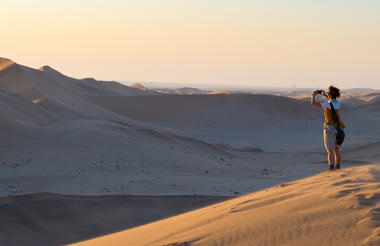

Swakopmund restaurants - there is a wide choice of places to dine in Swakopmund. Our personal favourite is the Tug which sits right on the beach but there will be a restaurant in town to suit all tastes
After a hearty breakfast we take the salt road north before turning inland at Henties Bay on to the gravel road east past Namibia’s highest mountain, the Brandberg . Here we will head for the White Lady Lodge, a rustic but simple place to stay right at the foot of the mountain and famed for occasional visits by Namibia’s desert elephants.
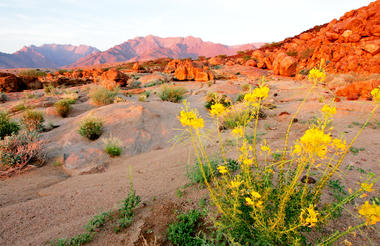
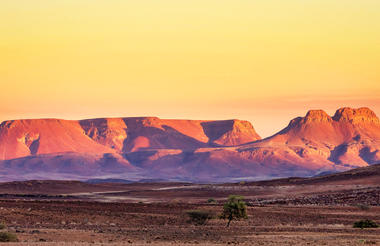
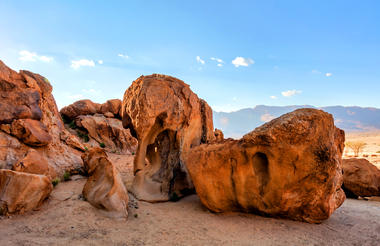
Highlights: Shipwrecks, Ostrich, Springbok, The Brandberg, Desert Adapted Elephants, Meerkats
The lodge has frequent visitors from desert elephants and they have recently added a waterhole for the wildlife. Afternoon elephant tracking is available and the gardens are full of birdlife
The drive from Brandberg to Etendeka is arguably one of the most stunning in Namibia. . If time permits you can stop at the Twyfelfontein Rock engravings, a UNESCO World Heritage Site before continuing your journey which takes you over mountain passes and through sandy riverbeds before you reach the Palmwag Concession, a vast, unfenced area designated to wildlife.
Etendeka gives you the opportunity to totally relax in one of the most pristine and remote areas on earth. The landscape dwarfs you and guests often describe it as a humbling experience. The scenery is breathtaking, the wildlife runs wild and free and the hospitality genuine and warm
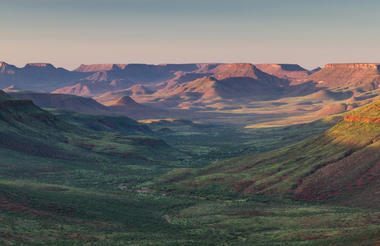
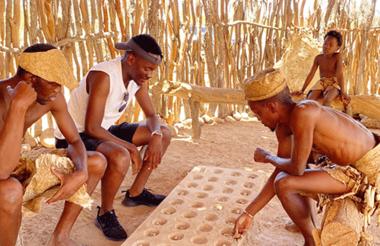
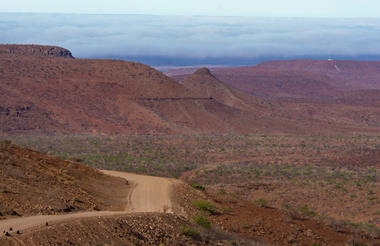
Highlights: Twyfelfontein, Herero and Himba people, Desert elephants, Black Rhino, lions, leopards, cheetah, giraffe, other herbivores, night skies, stunning scenery.
Today you will enjoy being in the middle of one of the most remote and beautiful parts of Namibia. Etendeka is a legendary camp, here you can enjoy the total solitude, the magnificent scenery and with luck Damaraland’s famous desert lions, elephants and black rhinos along with giraffes, oryx, springbok, zebras and other resident herbivores. Your days will be spent in search of wildlife and your evenings will be spent around the campfire back at the lodge discussing the highlights of the day before a million stars come out.
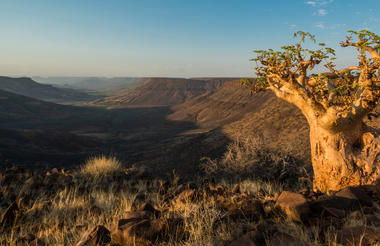
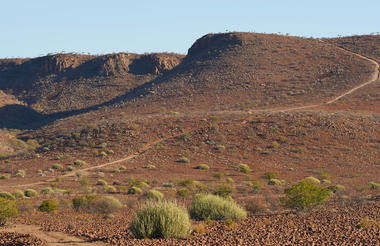
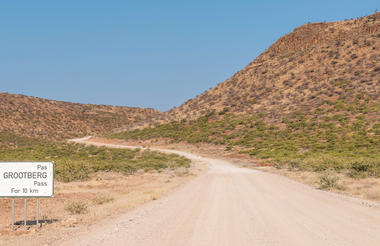
Etendeka gives you the opportunity to totally relax in one of the most pristine and remote areas on earth. The landscape dwarfs you and guests often describe it as a humbling experience. The scenery is breathtaking, the wildlife runs wild and free and the hospitality genuine and warm
A long drive today, but an interesting one, we will try and leave the lodge as early as possible and drive over the Grootberg Pass to the one horse town of Kamajab where we can have a spot of lunch before heading back onto the tar road to the Andersson Gate in Central Etosha to begin your safari in this world famous wildlife sanctuary. This huge park is home to an amazing diversity of wildlife and the area around Okaukuejo is known for its open plains and wide vistas where vast herds of herbivores trek endlessly to the camp’s floodlit waterhole followed by the ever present carnivores looking for their next meal.



Etosha Highlights: floodlit waterholes, Etosha Pan, elephant, rhino, lion, leopard, cheetah, zebra, oryx, giraffe, black-faced impala, wildebeest, springbok, eland, kudu, jackals, honey badgers, mongooses, raptors, vultures,
We have the whole day to explore the open plains that surround Okaukuejo Camp and the Mopane woodlands east of the camp around Olifantsbad waterhole.
We will check the sightings book twice a day to check on any major recorded sightings and spend our morning and afternoon drives in search of Etosha's wildlife.
At the camp's own waterhole large herds of elephants often come down to drink and dust bathe before heading back into the bush and black rhinos often frequent the whole from 9pm onwards and throughout the night



The Okondeka waterhole on the pan’s edge is often frequented by one of the largest lion prides in the area and to the east of the camp are three further productive waterholes known for elephants, lion, leopard, spotted and brown hyena, zebra, gemsbok, springbok, wildebeest, ostrich and occasionally aardwolf. The open plains are also good for the larger birds of prey such as vultures, several eagle species and peregrine falcons.
We head east today towards Namutoni Camp and the wildlife rich acacia woodland around Fischer’s Pan. Not only is this area home to some of Etosha’s largest lion prides, leopard sightings here are frequent, this area is home to the majority of the park’s giraffe and it is one of the best places in Africa to see the world’s smallest antelope, the diminutive Damara Dik-Dik.



Namutoni Area Highlights: within a few kilometres from camp there are several excellent waterholes and two in particular are productive all day. There is a very large hyena clan near one of the waterholes and the members are often seen returning to their den early in the morning. All the main carnivores are often spotted in this area and cheetah are often seen hunting around Fischer’s Pan. Good area for lion, hyena, leopard, cheetah, elephants, black rhino, damara dik-dik, all plains game, warthogs and mongooses. Flamingos and pelicans can be seen in Fischer’s Pan after the rains
There are many key waterholes within a few kilometres of Namutoni Camp so we can spend our game drives looping back to camp for quick comfort breaks before we head off again to other areas.
The camp has a lovely pool area that sells lunchtime toasties and beers and the evening restaurant has an outside seating area and good food.



Evening drives are best spent at two productive waterholes,: Chudop is good both early morning and all day for herbivores, especially giraffe. For the last hour Klein Namutoni waterhole is often very rewarding and has perfect photographic light and offers the added bonus of a perfect African sunset on the way back to camp
After a final game drive we leave the peace and quiet of Etosha and head south on the tar road until we reach the gates to Okonjima. The lodge lies a further 24km into the middle of the mountains and it is here we will spend your last 2 nights searching for some of the Africa’s biggest carnivores. Options include an Endangered species trail, tracking leopard and hyena from an open vehicle with the aid of a telemetry and visiting the Africat Foundation. With its magnificent rooms, excellent cuisine and genuine conservation story, Okonjima is always a highlight of any trip to Namibia.



Okonjima is not only a luxury lodge and a wonderful place to spend your last night in Namibia it is also home to the AfriCat Foundation.
Africat is a non-profit organisation set up to support conservation through education and to help secure the future of Namibia's endangered carnivores.
With opportunities to track leopard in the 54,000 acre reserve and the new Endangered Wildlife Trail. Okonjima gives you chances to see some of Africa's rarely seen animals such as brown hyena, aardwolf, aardvark and pangolin
Whilst staying at the lodge you will be able to actively observe part of this programme and understand how Africat aims to protect and rehabilitate these endangered carnivores.
At the Carnivore Care Centre you will have the opportunity to photograph cheetah in their natural habitat within their large enclosures while your guide explains in detail how the programme works.
Afternoon Reserve Activity
Okonjima is not only a luxury lodge and a wonderful place to spend your last night in Namibia it is also home to the AfriCat Foundation.
Africat is a non-profit organisation set up to support conservation through education and to help secure the future of Namibia's endangered carnivores.
Here you have the opportunity to spend time out with your guide in 54,000 acres of pristine bush tracking the resident carnivores who live wild and free, hunting for themselves.
A visit to the Carnivore Care Centre helps you understand the valuable work carried out here and tracking leopard and brown hyena out in the reserve gives you a great opportunity to spend time with these elusive carnivores
After our morning trail and a hearty breakfast we head south once more and out into the mountains surrounding Windhoek to our last night's accommodation River Crossing Lodge.
Here we can enjoy a final sundowner on the terrace while we discuss the highlights of our trip before a final sumptuous dinner.
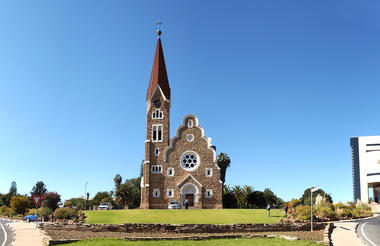
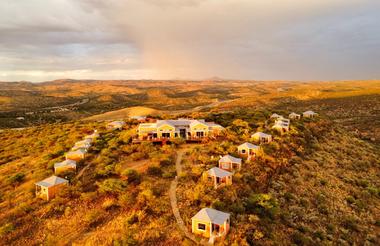
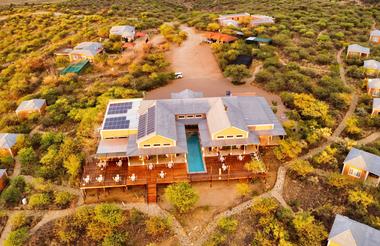
The three and a half hour drive back to Windhoek and on to the Inn is all on the main tar road.
River Crossing is on the way to the airport out of the city so from here it is just a short distance to have you back at Hosea Kutako in good time for your onward flight home





